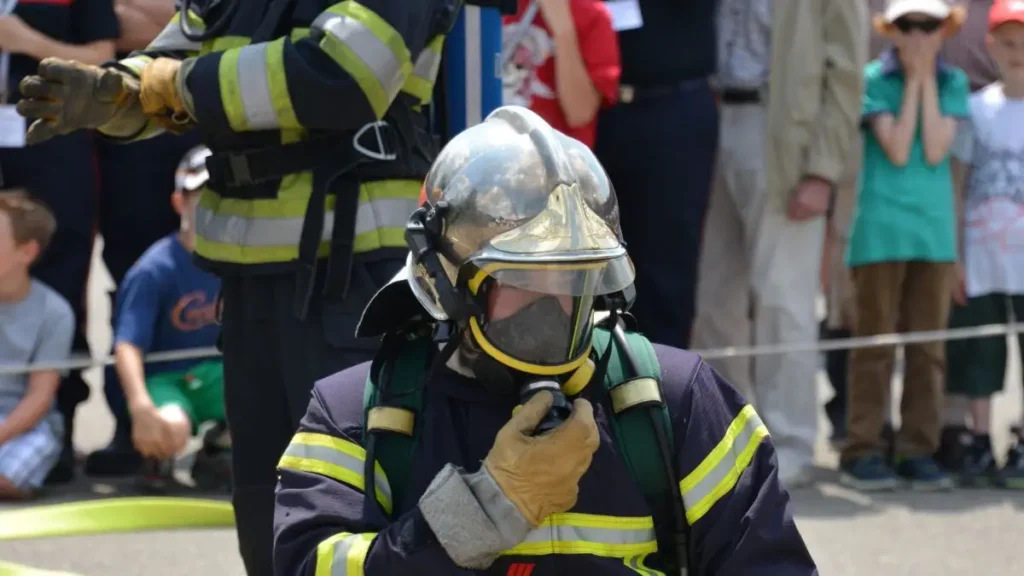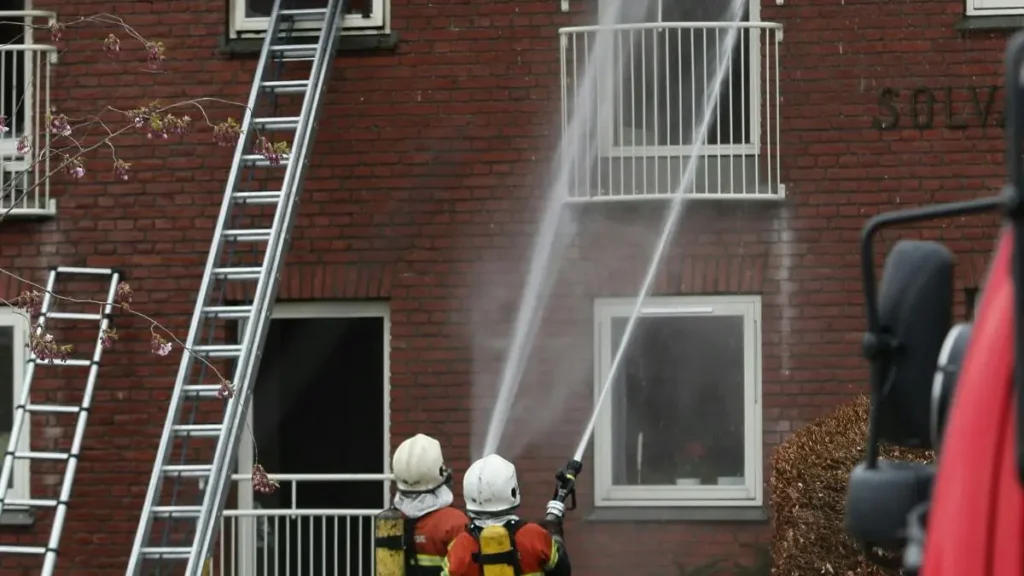Calvert County Apartment Fire Kicks Residents Out of Homes
I still remember reading about that early morning in Chesapeake Beach, Maryland, just before Thanksgiving. More than two dozen people were abruptly forced out of their homes when a massive fire tore through a two-story apartment building on Gordon Stinnett Avenue.
The flames shot through the roof almost as soon as firefighters arrived, leaving the building in ruins.
It wasn’t just the fire itself that caught my attention—it was how quickly it escalated. Fourteen apartments were damaged, and 25 residents suddenly found themselves without a place to stay, their belongings reduced to blackened remains. The wind that morning made it worse, whipping the flames across the roof and making containment a real challenge.
If you picture it, the scene was chaotic yet miraculous. Despite the intensity, everyone made it out safely. This section matters because it gives you the full scope of what happened—where, when, and how the fire spread—so you can truly grasp the impact on the residents and the community.
Heroism That Saved Lives

What really stood out to me about this fire wasn’t just the intensity of the flames—it was the bravery of a single resident. NBC Washington reports that early that morning, a woman noticed smoke and saw fire starting to spread across the roof.
Without thinking twice, she ran from door to door, warning every resident in the building. Because of her quick action, everyone was able to evacuate safely.
I kept picturing the chaos in those apartments: people half-asleep, startled by alarms and smoke, yet all managing to get out in time.
Some residents needed minor treatment on the scene, but miraculously, no one suffered serious injuries. It’s one of those moments that remind me how much a single person’s presence of mind can prevent a tragedy.
Her actions reminded me of other cases, like the Edgerton house fire, where quick thinking and the bravery of neighbors saved lives.
Fire Response and Containment
Firefighters arrived just after 6:30 a.m., but by then, heavy flames were already shooting through the roof of the two-story building on Gordon Stinnett Avenue.
The fire was so severe that crews from Anne Arundel and Prince George’s counties were called to help contain it. Strong winds that morning only fueled the blaze, making the situation even more dangerous.
Watching the timeline unfold, it’s clear how quickly an apartment fire can escalate. Despite the extreme conditions, fire crews battled the flames efficiently, but the building couldn’t be saved. The roof was gone, interiors burned, and most belongings were reduced to blackened remains.
The apartment complex was ultimately declared a total loss, leaving residents suddenly homeless.
Watching the timeline unfold, it’s clear how quickly an apartment fire can escalate—similar to the Kentucky home fire where officials reported multiple injuries within minutes.
Investigating the Cause
Right now, the cause of the fire is still under investigation. The Office of the State Fire Marshal is looking into how the blaze started and why it spread so quickly.
While strong winds contributed to its intensity, no specific ignition source has been confirmed yet.
I find myself thinking about the lessons this holds for residents of multi-unit buildings. Understanding what triggers these fires—and how quickly they escalate—can be crucial for prevention.
Authorities are still working to provide answers, and residents are left hoping for clarity as they rebuild their lives.
While the exact cause here is still under investigation, past incidents like the Virginia home destroyed by a lithium-ion battery show how hidden risks can quickly turn catastrophic.
Immediate Human Impact and Relief Efforts
Twenty-five residents were displaced almost overnight, their homes destroyed and belongings charred. It’s hard not to imagine the stress and shock they felt that morning, losing not just property, but the sense of safety that a home provides.
The Red Cross stepped in immediately, offering emergency shelter, essentials, and emotional support for those affected.
Local neighbors and community members also pitched in, helping with immediate needs and showing how important community support is in times of crisis. The fire may have destroyed physical structures, but it highlighted the resilience and generosity of people when disaster strikes.
Lessons and Precautions for Residents

One of the biggest takeaways from this fire is just how essential preparation is. Smoke alarms, clear evacuation plans, and awareness of your surroundings aren’t optional—they can save lives.
The woman who warned the residents is a perfect example of how vigilance and quick action can prevent tragedy.
If you live in a multi-unit building, it’s worth taking a moment to review your emergency plan. Make sure smoke detectors are working, know all your exits, and have a plan for where to go in case of a fire.
If you want quick safety updates and real-time alerts about local fire incidents and tips, you can join communities sharing these insights via WhatsApp. It’s a handy way to stay informed without waiting for the news.
Landlords also carry responsibility—ensuring proper fire safety measures are in place, like clear escape routes and accessible alarms, can make all the difference.
Broader Implications for Calvert County
While this fire affected a single apartment complex, the consequences ripple through the wider community. Losing 14 units and displacing 25 residents underscores the vulnerability of local housing stock and highlights the importance of proactive safety measures.
For me, the bigger picture is clear: preparedness matters, both for individual residents and for the community as a whole.
Local authorities, building managers, and residents alike can use this as a reminder to review safety protocols, maintain vigilance, and work together to prevent similar disasters. It’s a wake-up call that safety planning isn’t just personal—it’s a shared responsibility.
Key Takeaways
Reading about this fire, a few things really stick with me. First, vigilance saves lives—the woman who alerted the residents turned a potential tragedy into a story of survival. Second, emergency preparedness matters; knowing exits, having smoke alarms, and reviewing safety plans isn’t optional, it’s essential.
Third, community support is critical. Disasters affect more than property—they affect people, families, and their sense of security. The Red Cross and local volunteers stepping in immediately shows how collective effort can soften the blow.
Finally, this incident reminds us that fires can escalate in minutes, especially in multi-unit buildings during windy conditions. Being proactive today can prevent heartbreak tomorrow.
I’d encourage you to think about your own situation—when was the last time you checked your smoke alarms or reviewed an emergency plan? Small steps now could make all the difference if disaster strikes.
Looking Ahead: Rebuilding and Prevention
For the residents of the Calvert County apartments, the coming weeks will be about rebuilding—both their homes and their sense of stability. Local authorities will continue investigating the cause, and insurance claims and relief efforts will play a key role in helping families recover.
For everyone else, there’s a clear lesson: don’t wait for a disaster to prepare. Multi-unit housing can hide vulnerabilities, and strong winds or other conditions can turn a small fire into a total loss. Talk to your neighbors, review your building’s safety measures, and stay aware of local emergency resources.
I also want to ask you—what steps have you taken in your home or building to be ready for a fire? Sharing tips and experiences can help others stay safe too. Engaging in these conversations today could save a life tomorrow.
Talk to your neighbors, review your building’s safety measures, and stay aware of local emergency resources. For more stories and safety guides on home fires, visit our website Build Like New.
Disclaimer: This article is based on the latest available information from official sources and local reports. Details of the fire and its investigation may change as new updates emerge. Readers are encouraged to follow local authorities for the most current information.


